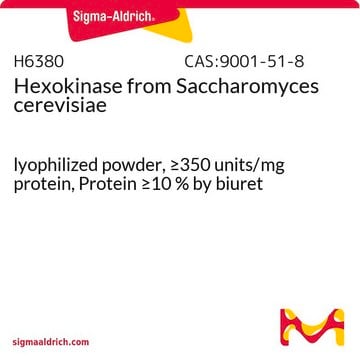D4022
P1,P5-Di(adenosine-5′) pentaphosphate pentasodium salt
≥95% (HPLC), powder
Synonym(s):
A(5′)P5(5′)A, Diadenosine pentaphosphate pentasodium salt
About This Item
Recommended Products
biological source
synthetic (organic)
assay
≥95% (HPLC)
form
powder
mol wt
~_1.0 kDa
color
white to yellow-white
solubility
H2O: 50 mg/mL
storage temp.
−20°C
SMILES string
[Na+].[Na+].[Na+].[Na+].[Na+].Nc1ncnc2n(cnc12)[C@@H]3O[C@H](COP([O-])(=O)OP([O-])(=O)OP([O-])(=O)OP([O-])(=O)OP([O-])(=O)OC[C@H]4O[C@H]([C@H](O)[C@@H]4O)n5cnc6c(N)ncnc56)[C@@H](O)[C@H]3O
InChI
1S/C20H29N10O22P5.5Na/c21-15-9-17(25-3-23-15)29(5-27-9)19-13(33)11(31)7(47-19)1-45-53(35,36)49-55(39,40)51-57(43,44)52-56(41,42)50-54(37,38)46-2-8-12(32)14(34)20(48-8)30-6-28-10-16(22)24-4-26-18(10)30;;;;;/h3-8,11-14,19-20,31-34H,1-2H2,(H,35,36)(H,37,38)(H,39,40)(H,41,42)(H,43,44)(H2,21,23,25)(H2,22,24,26);;;;;/q;5*+1/p-5/t7-,8-,11-,12-,13-,14-,19-,20-;;;;;/m1...../s1
InChI key
NNMFUJJMJIYTSP-CSMIRWGRSA-I
Looking for similar products? Visit Product Comparison Guide
General description
Application
- an adenylate kinase (AK) inhibitor in: sarcoma osteogenic (Saos-2) cells
- mitochondrial lysates during ATP synthesis
- tetramethylrhodamine methyl ester (TMRM) based membrane potential assay
- chromoplasts
Biochem/physiol Actions
Storage Class
11 - Combustible Solids
wgk_germany
WGK 3
flash_point_f
Not applicable
flash_point_c
Not applicable
ppe
Eyeshields, Gloves, type N95 (US)
Certificates of Analysis (COA)
Search for Certificates of Analysis (COA) by entering the products Lot/Batch Number. Lot and Batch Numbers can be found on a product’s label following the words ‘Lot’ or ‘Batch’.
Already Own This Product?
Find documentation for the products that you have recently purchased in the Document Library.
Customers Also Viewed
Our team of scientists has experience in all areas of research including Life Science, Material Science, Chemical Synthesis, Chromatography, Analytical and many others.
Contact Technical Service












